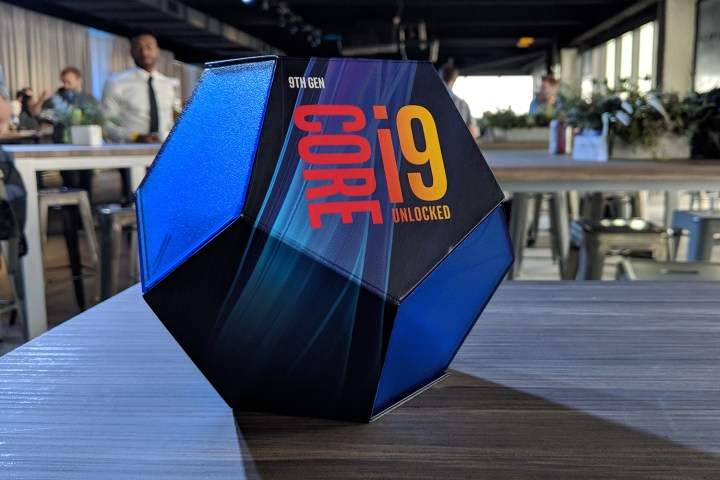Intel can’t catch a break. The instability saga we’ve witnessed over the past few months, along with a historically disastrous earnings report for the company, has led Intel into some pretty bleak territory. The company even postponed its Innovation event this year; meanwhile, shareholders are filing a lawsuit against Team Blue. No matter how you slice it, Intel is having a bad time right now.
There’s a lot of understandable anger pointed Intel’s way right now, from game developers saying they’re going to lose money, to gamers who say they’ve been denied returns, to shareholders that claim Intel fraudulently hid how bad things were. Those are all legitimate things to be frustrated about, and I understand the satisfaction you might feel when a company gets what it deserves.
On the other hand, make no mistake — the struggles Intel is facing aren’t just bad for itself. The situation is detrimental for the PC industry as a whole, and we’re only beginning to feel the ramifications.
Dynamics of a duopoly

Tech is dominated by duopolies. There’s Windows and macOS, Android and iOS, Nvidia and AMD, and of course AMD and Intel. It’s not a stretch to call these duopolies, either — literally every one of those examples is listed as an example on the Wikipedia page talking about duopolies.
Of course, there are some competitors beginning to reach into these markets, such as Qualcomm’s push into laptop PCs with the release of the Snapdragon X chip. But when it comes to socketed, desktop processors, you have no other option but AMD and Intel.
In a perfect world, this would be a Bertrand duopoly, where AMD and Intel compete with each other on pricing while offering the same level of quality. There’s a big factor at play when it comes to tech, however — brand loyalty. In a study on brand loyalty, researchers found that experience, satisfaction, and trust in a brand were the main contributing factors to brand loyalty, which shouldn’t come as a surprise. If you’ve been building PCs for a while, you’ve lived that. I can’t count the number of times I’ve had friends pick up an Intel CPU or an Nvidia GPU because that’s what they’ve always used.
That experience is powerful, and it leads a lot of enthusiasts to form into camps about the products they purchase. There’s the fan culture surrounding AMD and Intel, where fans will defend their company of choice or, more often than not, dogpile on the opposing company when things go wrong.
That’s what’s happening with Intel right now. Just look at this thread from the AMD subreddit where commenters are positing on the internal contracts with server providers and even the supply of AMD and Intel. Some users are even calling for Intel’s leadership to resign.

Now, I’m not in the business of defending multibillion-dollar corporations when the chickens come home to roost. Intel is facing a lot of trouble right now, from the instability of its CPUs to lawsuits from shareholders, and it’s the company’s responsibility to sort that out. Kelt Reeves from PC builder Falcon Northwest described the situation as “Intel falling on its own sword” when I spoke to him about the situation. The dogpiling on Intel doesn’t just hurt the company. It hurts CPUs as a whole.
That’s the consequence of a duopoly. When the balance of power shifts dramatically, it hurts the market as a whole. To be clear, that’s not what’s happened yet. But with the string of issues Intel is facing right now, it’s hard to imagine the company will be able to turn things around with the release of Arrow Lake in the next generation, even if they’re fantastic CPUs that don’t have the same stability issues. The dominant company in duopoly doesn’t have an incentive to push things forward unless their dominance is threatened.
Intel is still the market leader in CPUs, but that lead has been slipping over the past several years in socketed, desktop CPUs. If Intel makes bad products, I’m not saying you should buy them just to maintain the CPU duopoly. But you should give them a fair shot. If not, we could end up in a situation with AMD leading the desktop market and resting on its laurels.
We’ve been here before

I’m not just assuming that AMD will rest on its laurels if Intel has a massive fall in desktop CPUs. We’ve seen that plenty of times in the past, and custom PCs are facing some of that apathy now. For the present comparison, you don’t have to look much further than Nvidia and graphics cards like the RTX 4060 Ti and RTX 4070 Ti. Nvidia has faced a lot of criticism this generation for overpriced GPUs in general, but that’s what happens when you have an overwhelming market leader.
AMD and Intel both have alternatives to what Nvidia is offering in graphics cards, but when Team Green controls 88% of the discrete GPU market — per Jon Peddie Research’s latest report — the company really doesn’t need to push the envelope. Even with competitors, Nvidia’s dominance dictates the price and quality of GPUs. That’s why we’ve seen cards like AMD’s RX 7900 XTX launch at $1,000 in this past generation. If Nvidia hadn’t priced its competing RTX 4080 at $1,200, AMD likely wouldn’t have priced its flagship so high.
We’ve seen an apathetic response from Intel in the past, too. AMD’s Bulldozer architecture, which nearly bankrupt the company, gave Intel a massive upper hand in the early 2010s. And starting with Intel’s 5th-gen Broadwell CPUs, Team Blue started biding its time. The 14nm process was used all the way up to 11th-gen desktop CPUs, with Intel slowly squeezing out slight performance advantages each year.

Generations of CPUs came and went with the same four-core and eight-thread configuration on Core i7 models, and no Hyperthreading on Core i5 and lower models. Intel was so far ahead that it didn’t need to add these features in the face of AMD’s first-gen Ryzen CPUs. It took years of consistently good CPUs from AMD for Intel to even start being competitive again, which is something that only manifested with the release of 12th-gen Alder Lake chips in 2021.
When an overwhelming market leader emerges, it leads to higher prices and a consistent cadence of products that push the needle just enough to justify a new release. In an ideal world, we’d have two companies with a nearly even market split. That leads to both leapfrogging each other on performance and a ruthless battle on pricing, which is a dynamic we saw in action with Intel’s 12th-gen and AMD’s Ryzen 5000 options. When that dynamic is in play, we have better products available for less money, and consumers ultimately win.
Good faith comparisons

We can talk in theory all day long, but we’re already seeing how Intel’s slip with its 13th-gen and 14th-gen CPUs is hurting the CPU market as a whole. This past week, AMD released its Ryzen 5 9600X and Ryzen 7 9700X, and next week, we’ll be getting the Ryzen 9 9900X and Ryzen 9 9950X. Some are calling AMD’s new chip “stellar,” while others claim they’re a disaster. I settled somewhere in between, as you can read in my Ryzen 5 9600X and Ryzen 7 9700X review.
Although there’s always differing opinions with a new hardware launch, you rarely see reviews occupying the highest and lowest end of the spectrum. It’s no wonder reviews are all over the place given the issues that Intel CPUs are currently facing. Do you recommend AMD’s latest simply because Intel’s CPUs have faced so many issues? Or do you look past the Intel instability problem and provide a harsh critique of AMD’s latest?
As much as many of us would like to believe that PC hardware reviews are some purely scientific process, that isn’t the case. When times are good, nitpicks can make the difference in a buying decision. And when times are bad, it might be worth it overlook minor issues when alternatives are few and far between.
Make no mistake, I’m not happy about the situation Intel is in, either. That has nothing to do with how it impacts Intel as a company, and more about how it impacts PC hardware as a whole. From higher pricing, disappointing products, and lopsided reviews, the downfall of one company in a duopoly hurts everyone.





